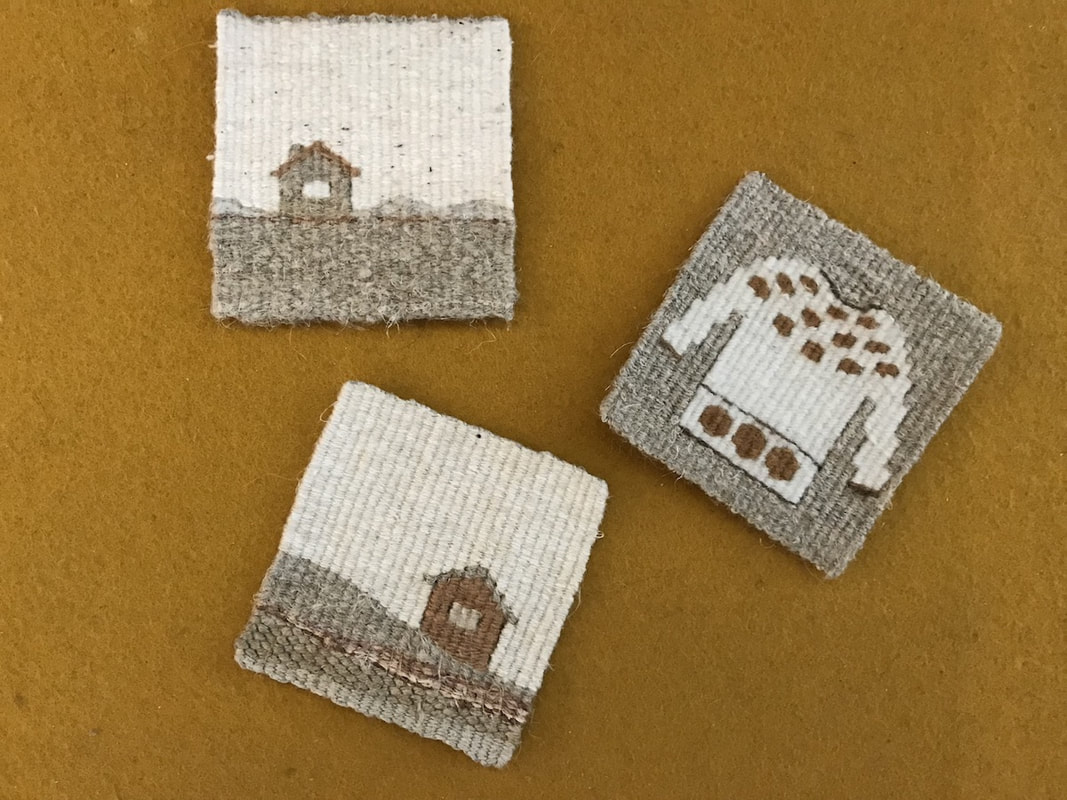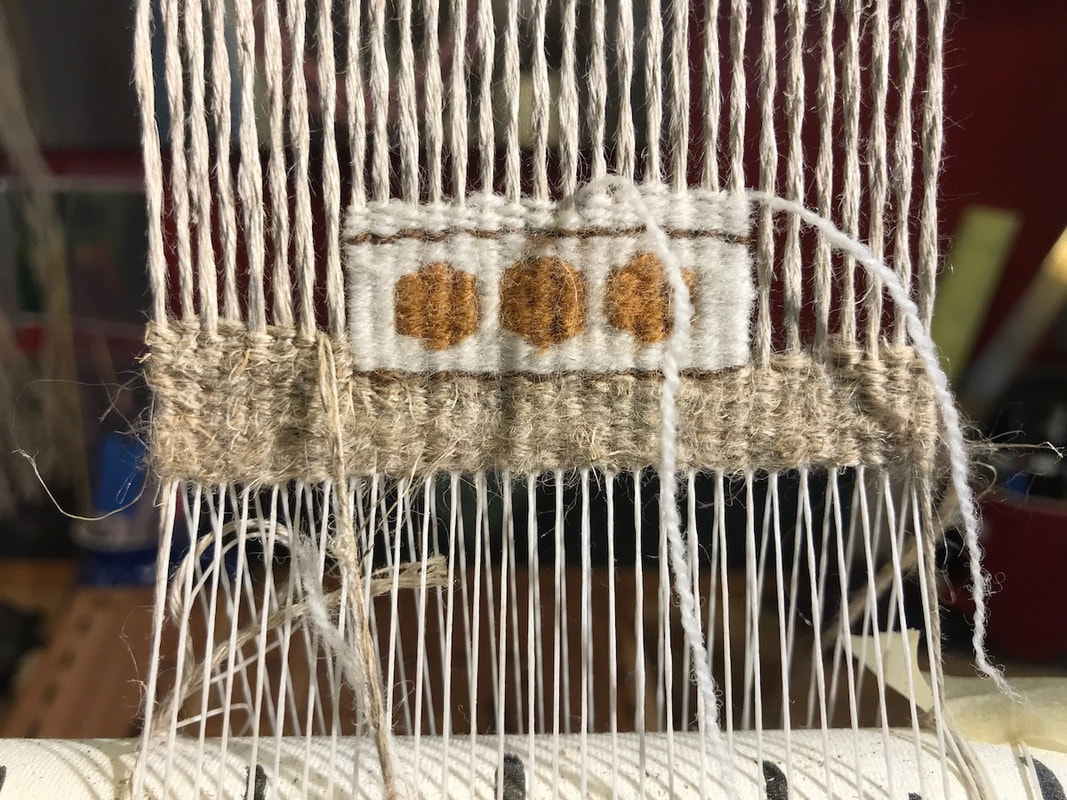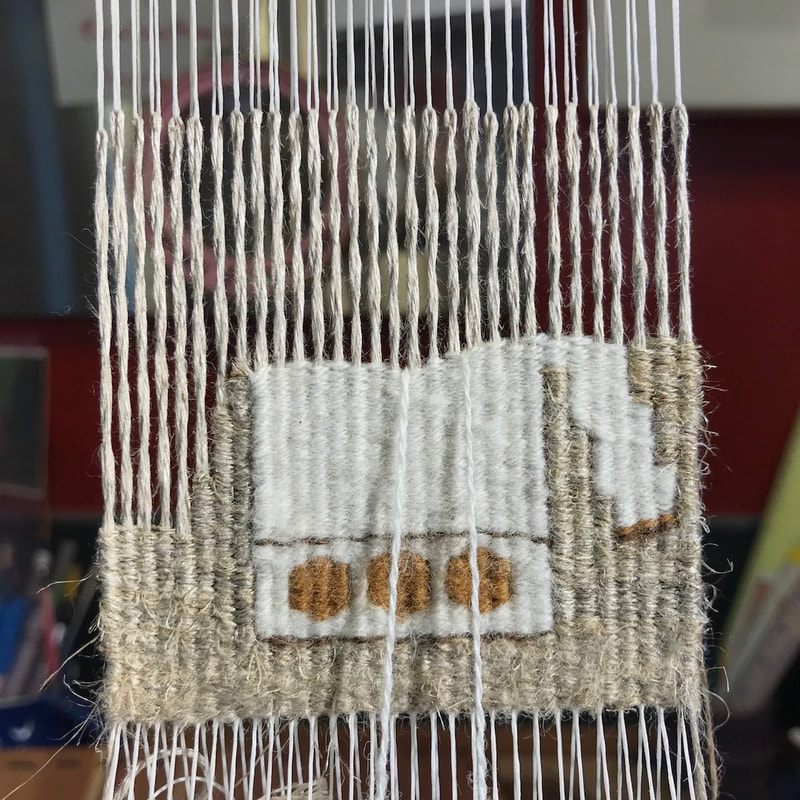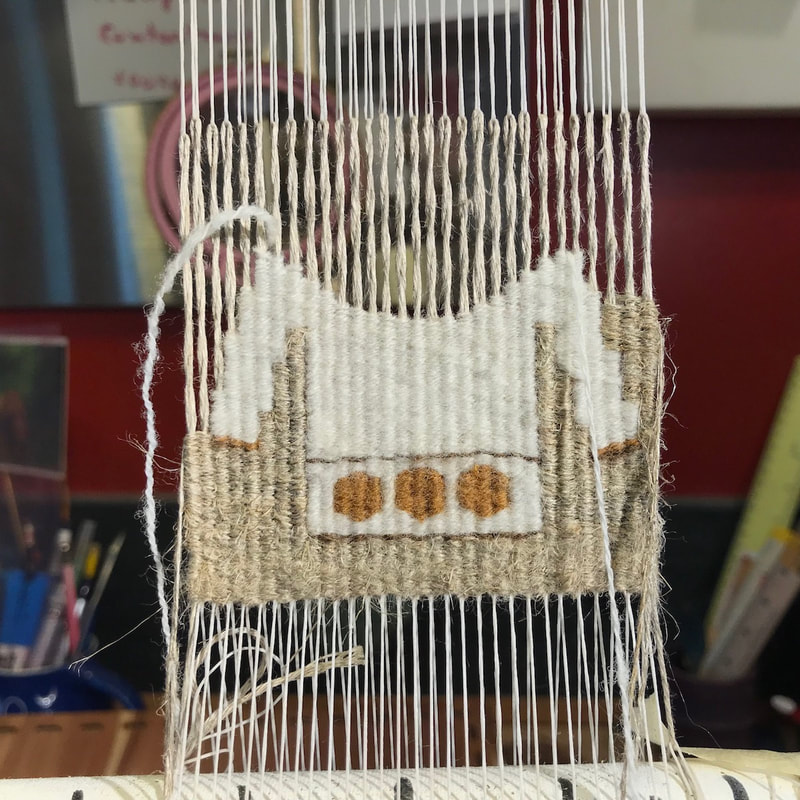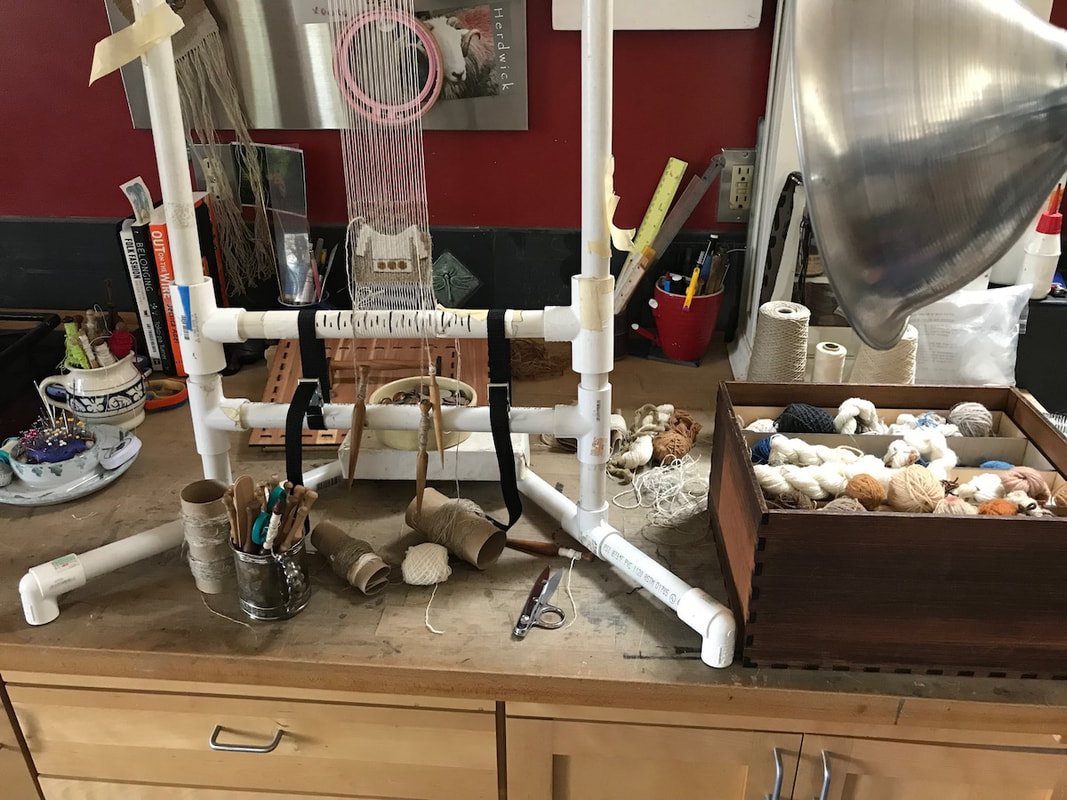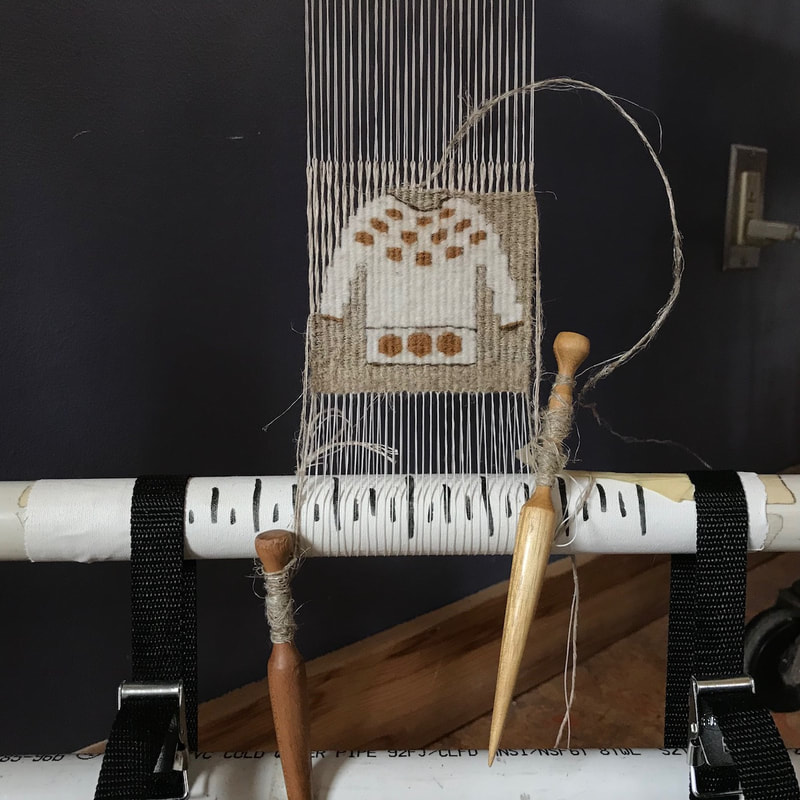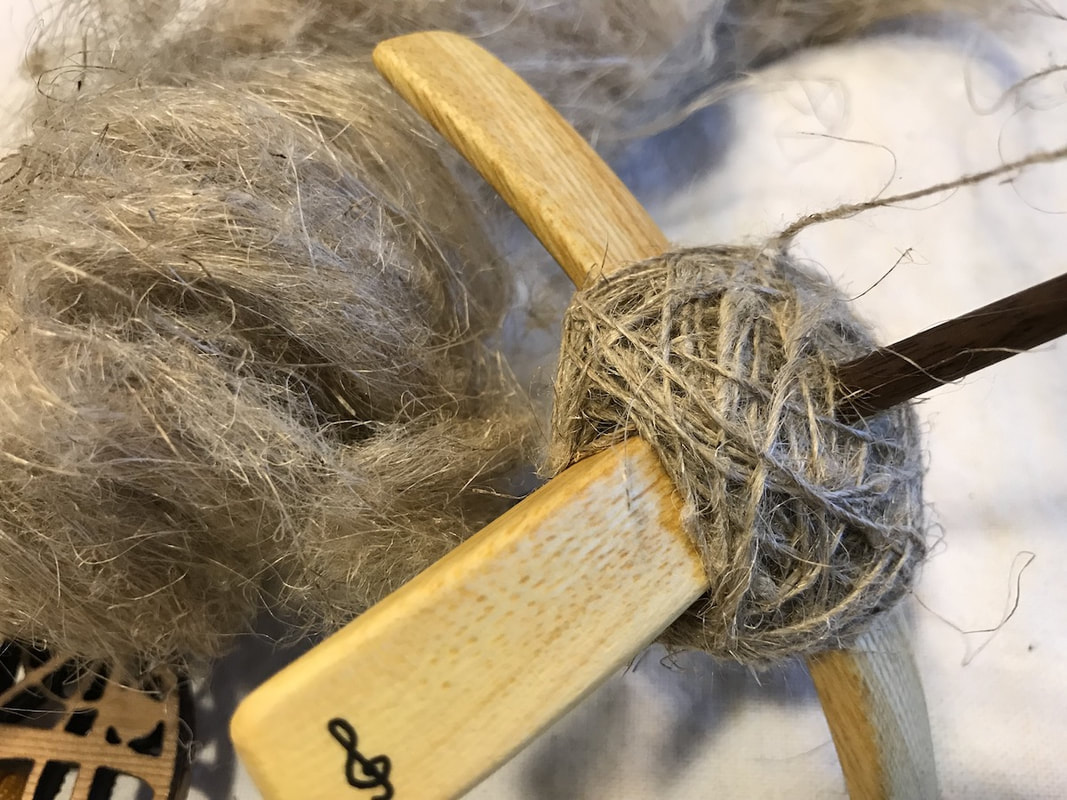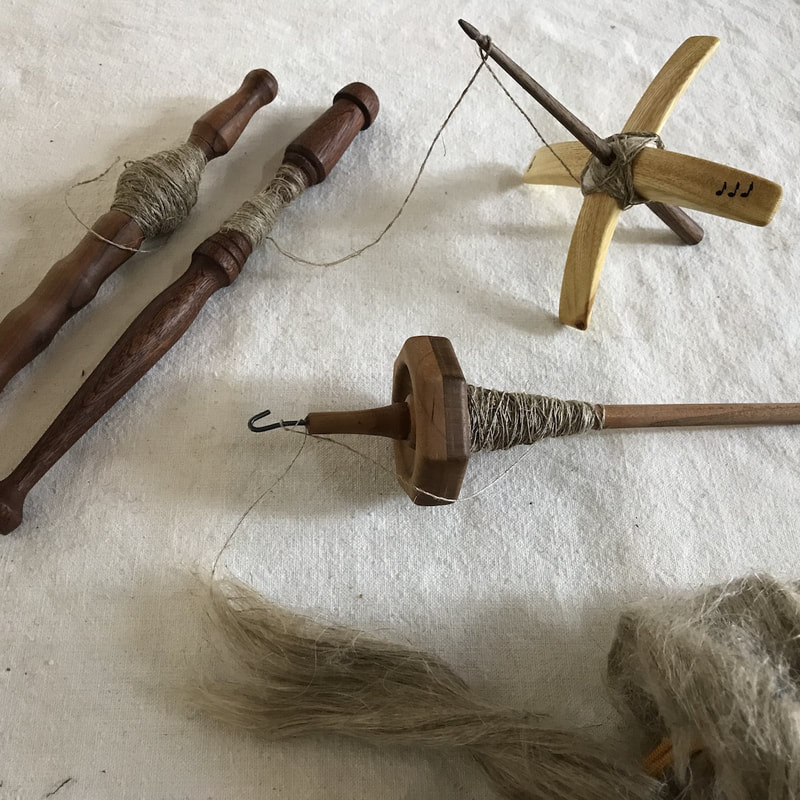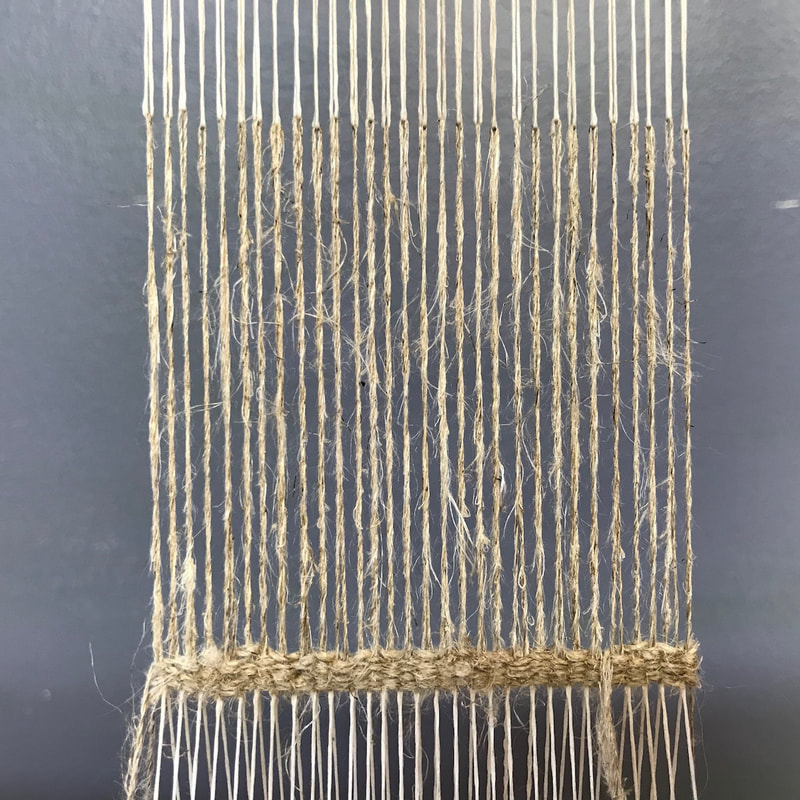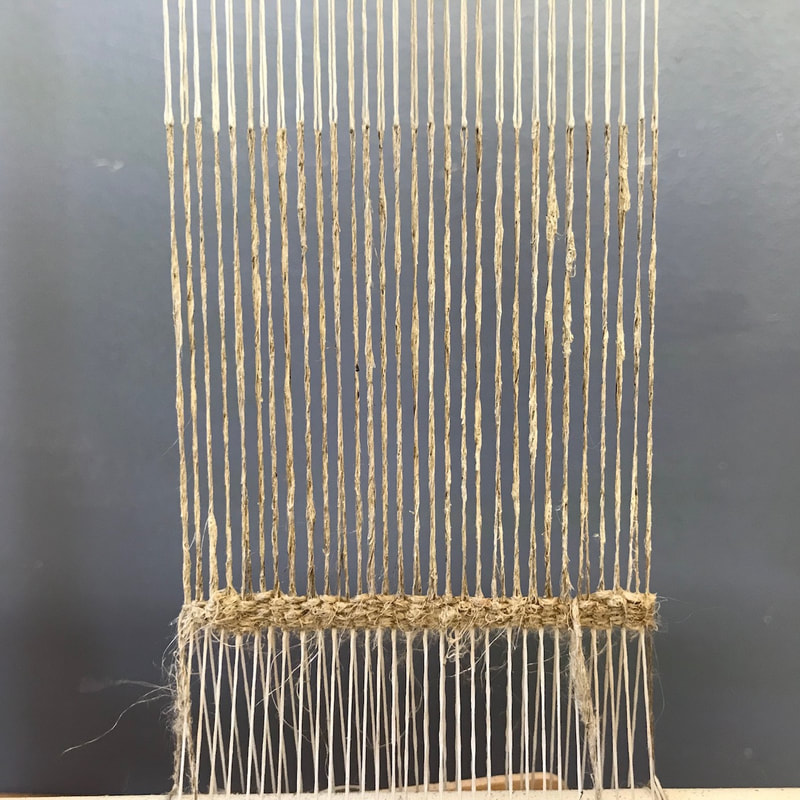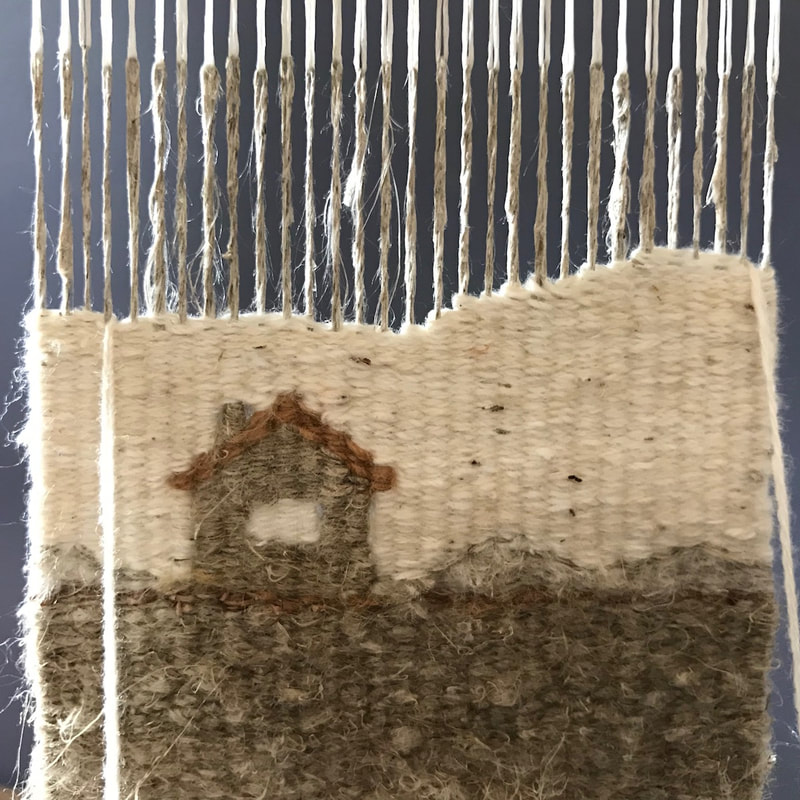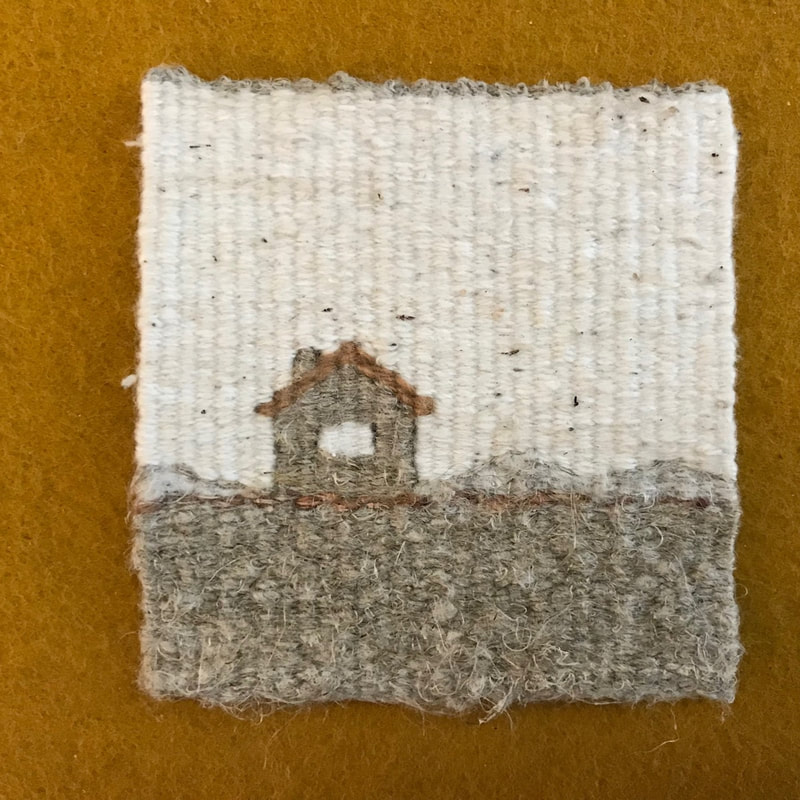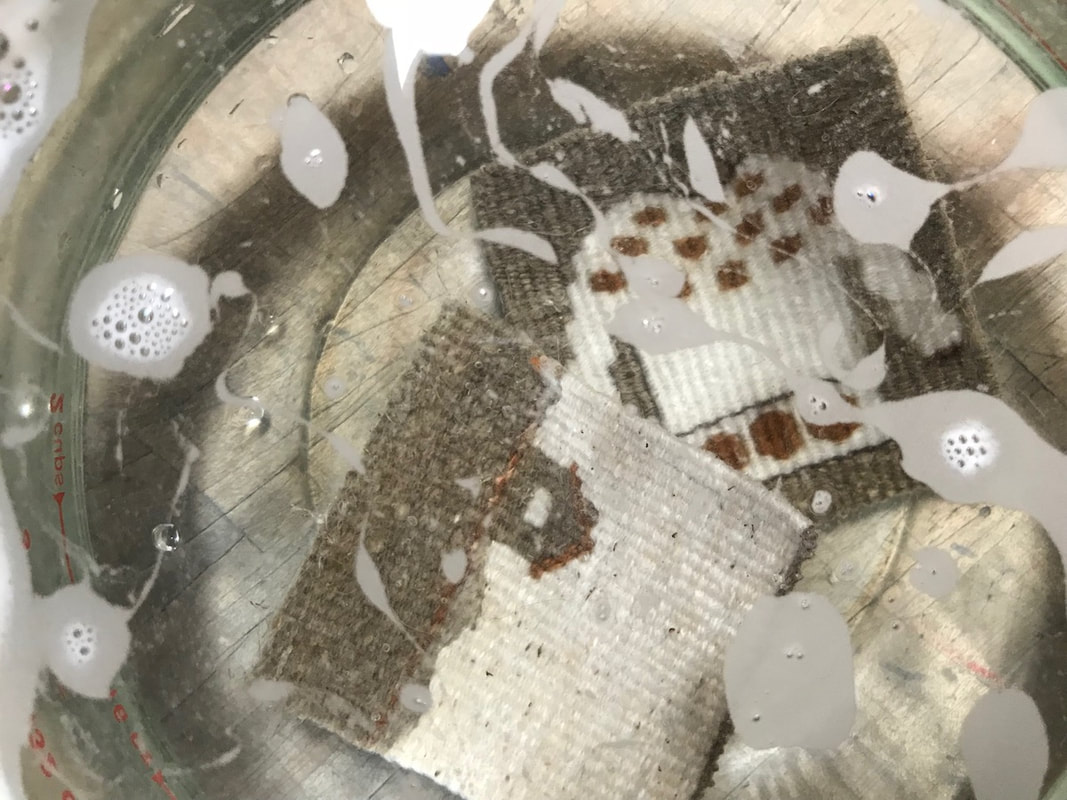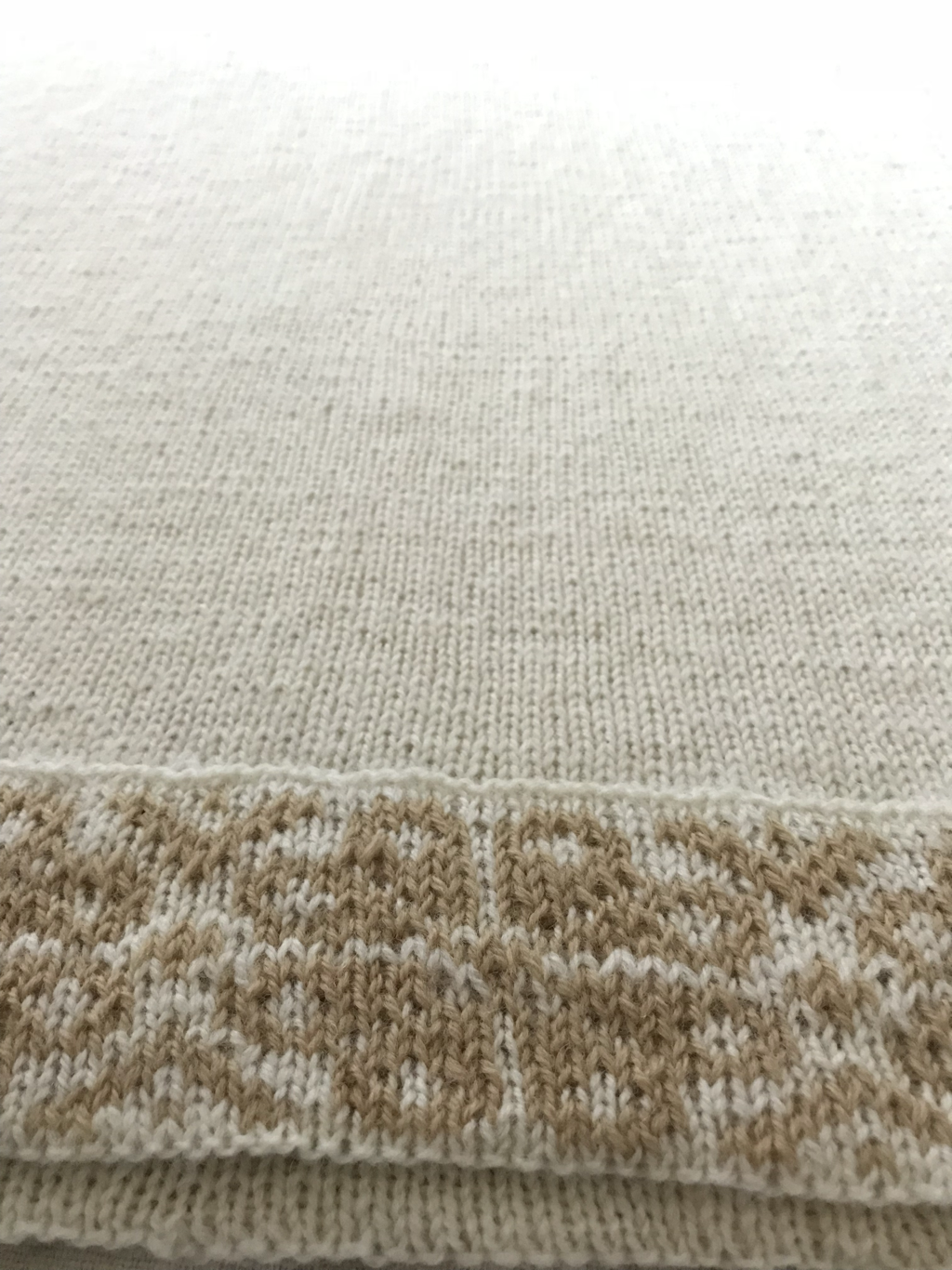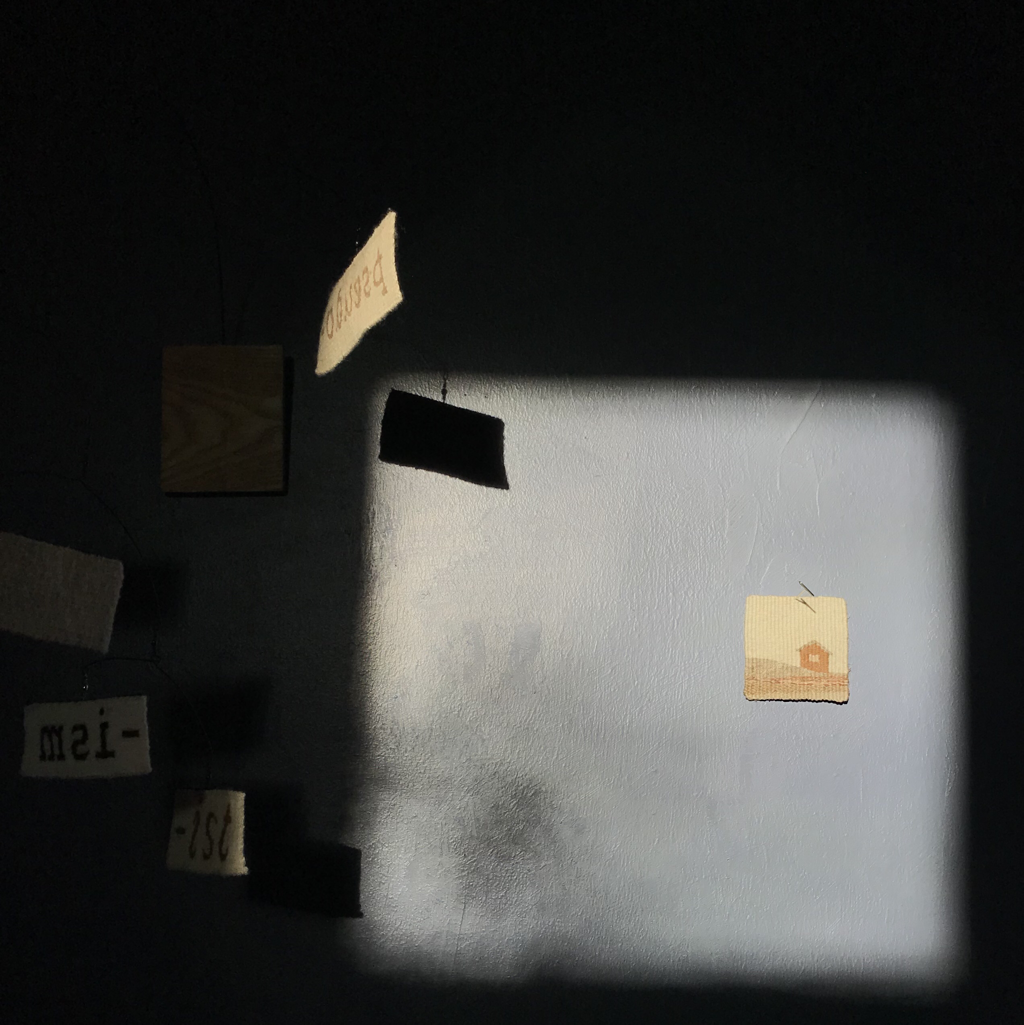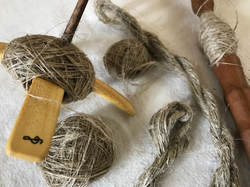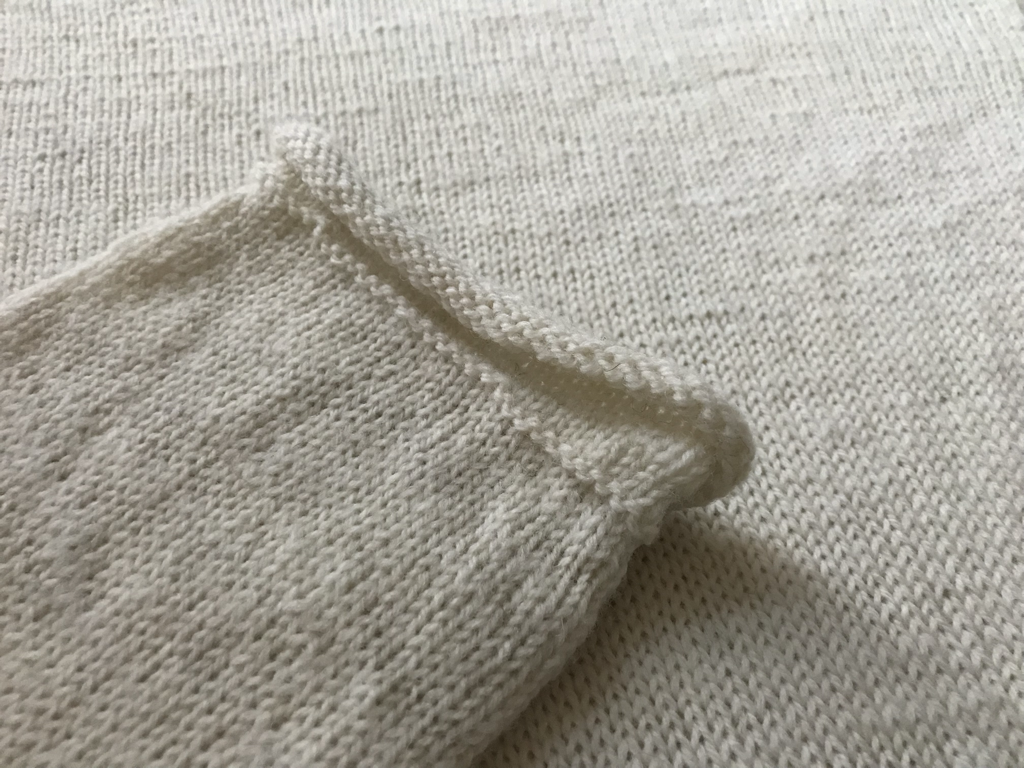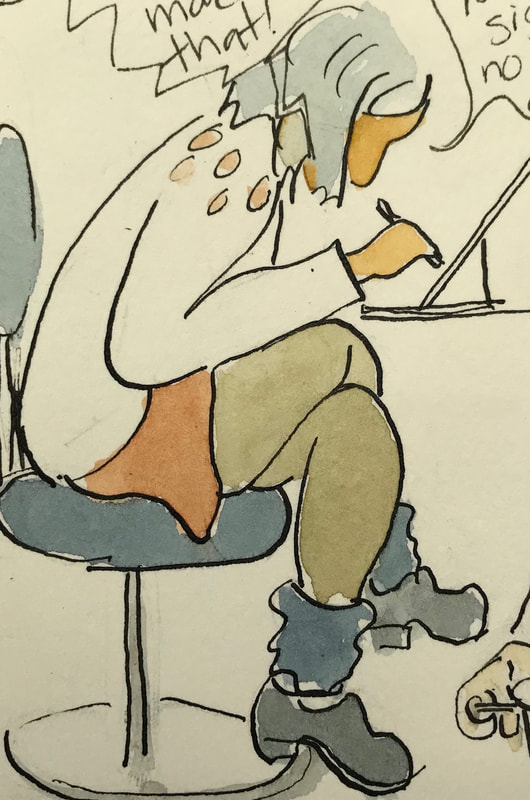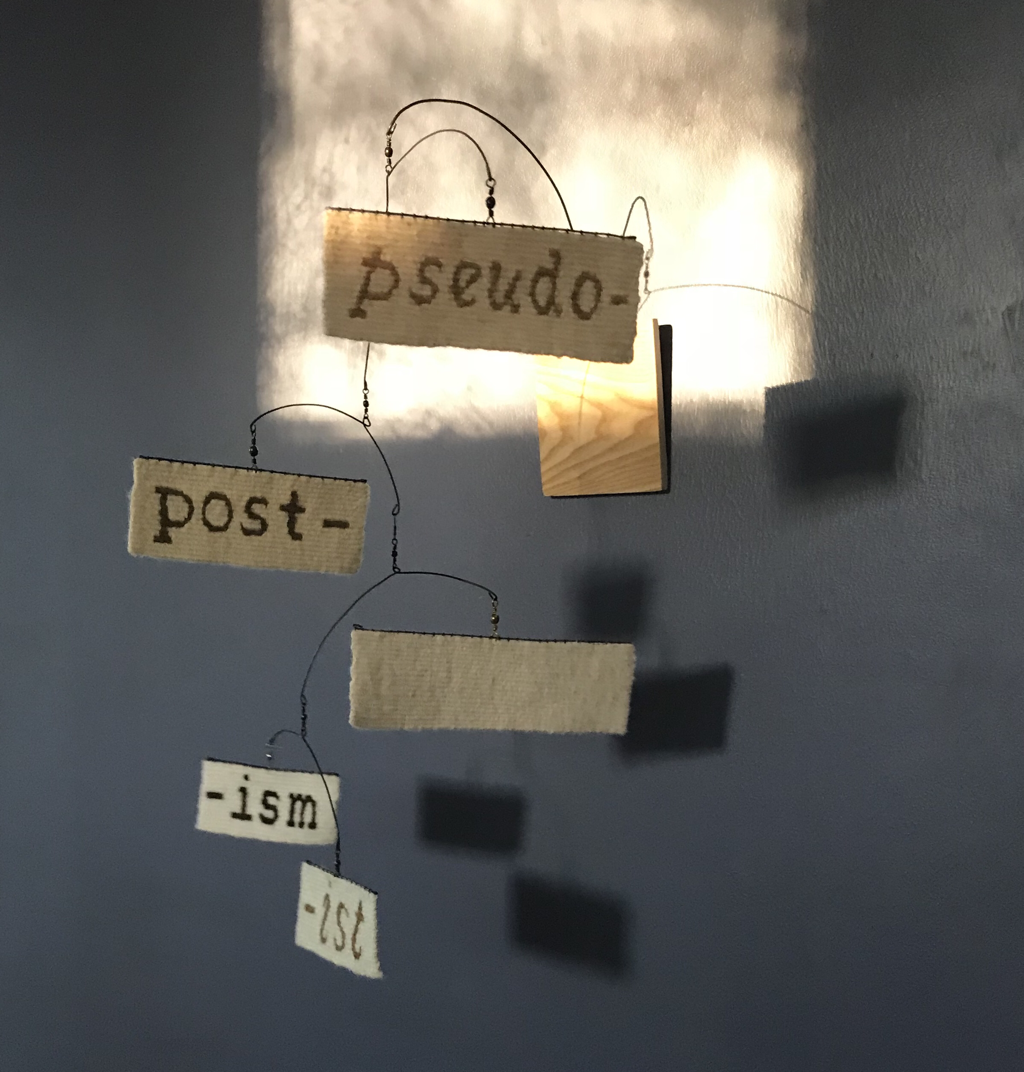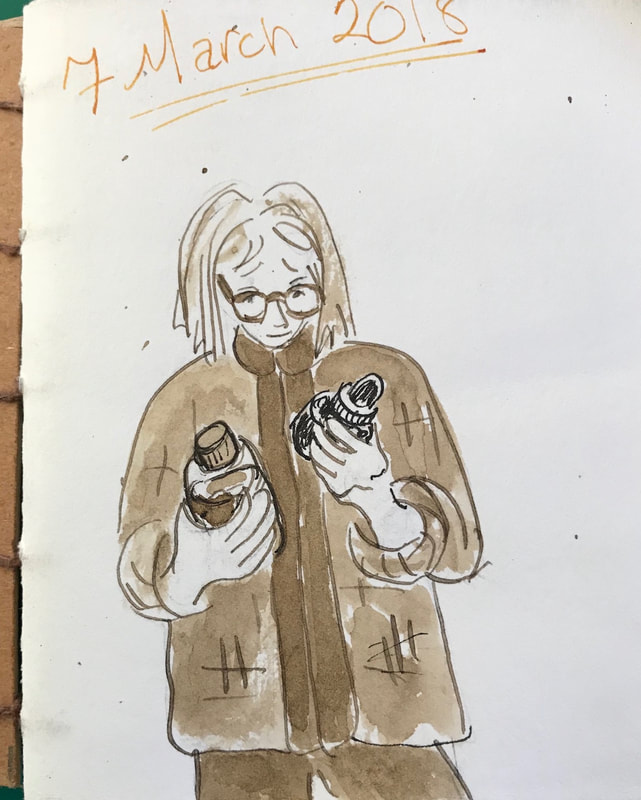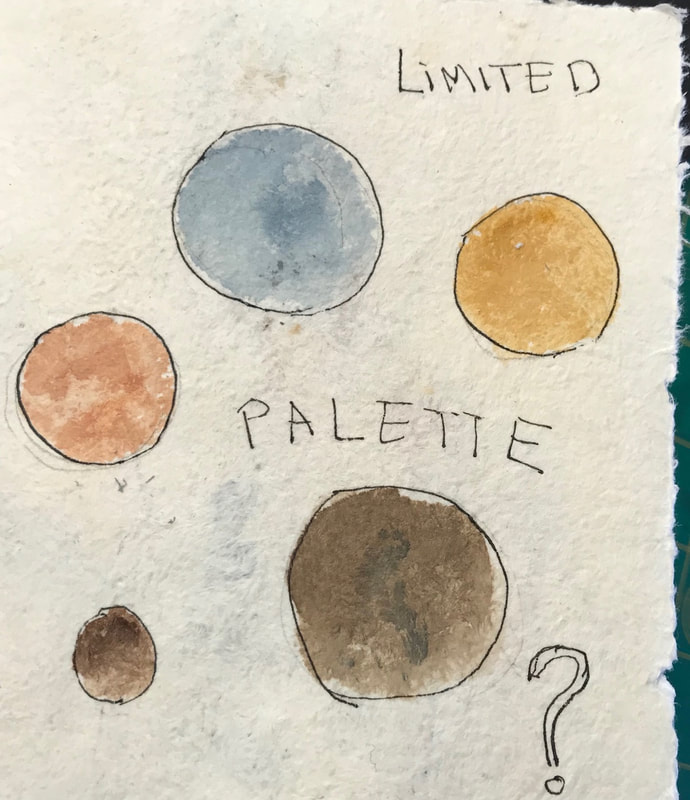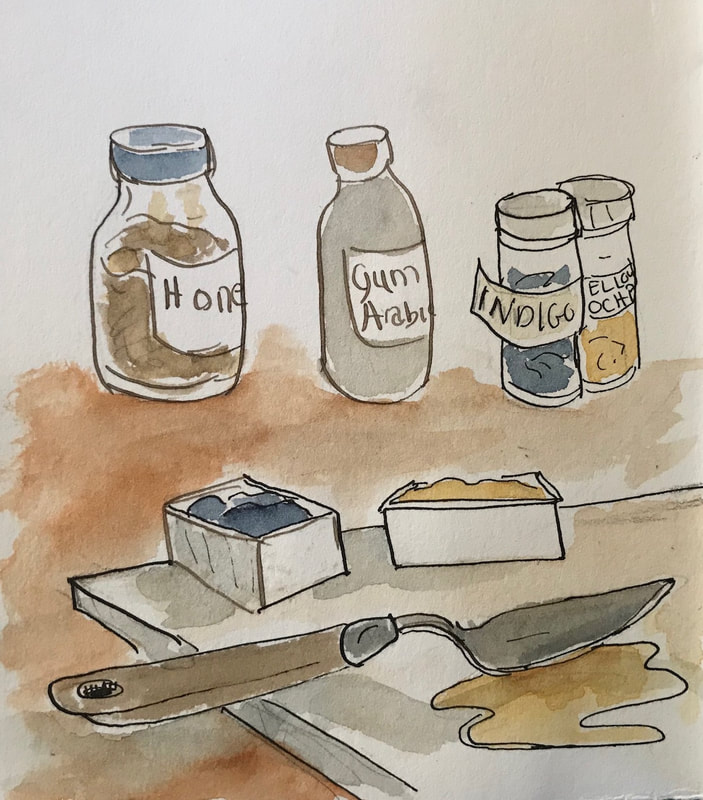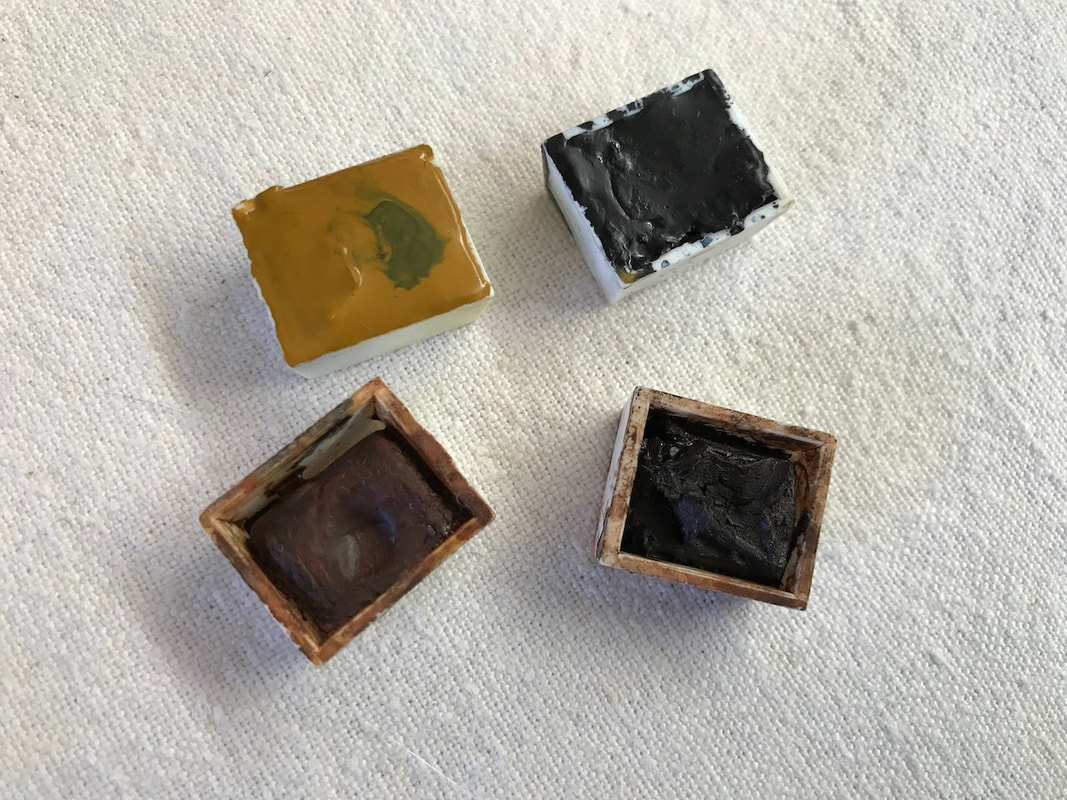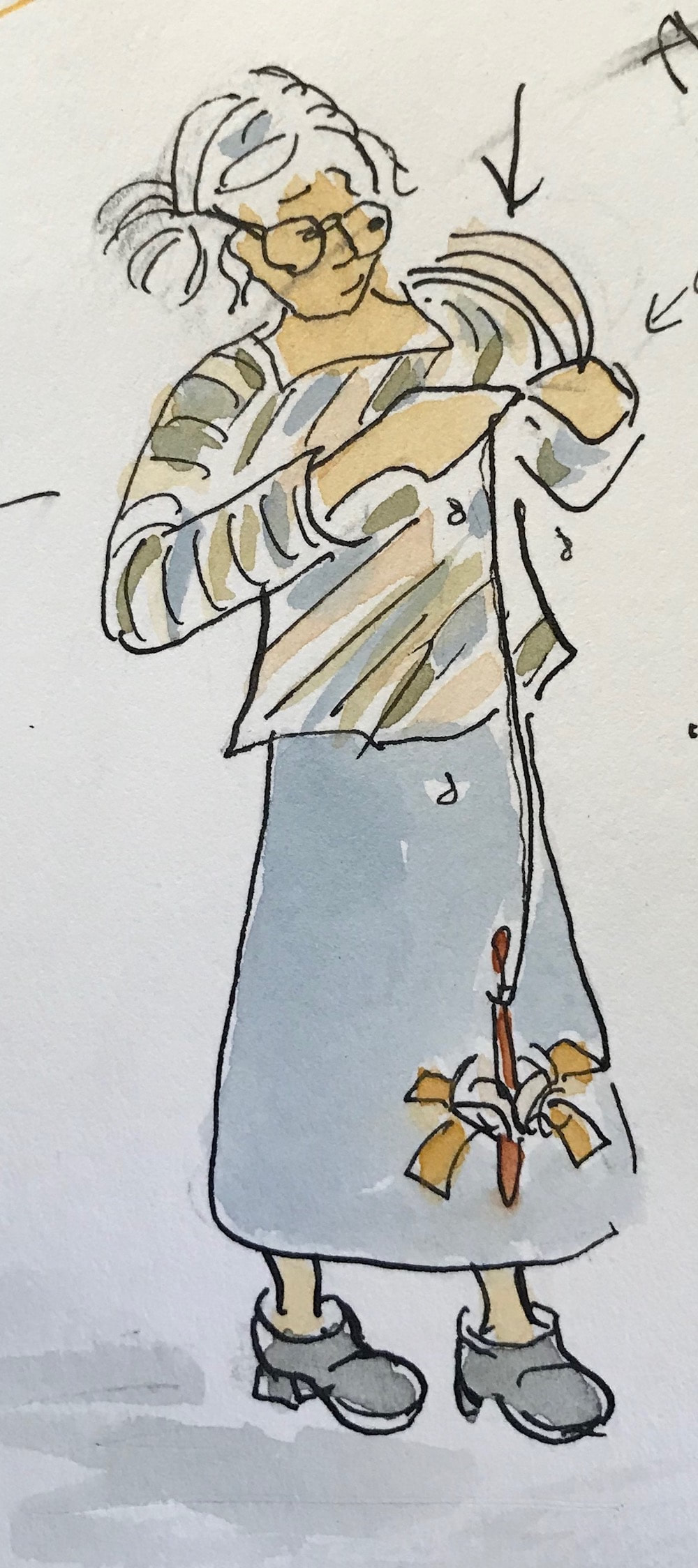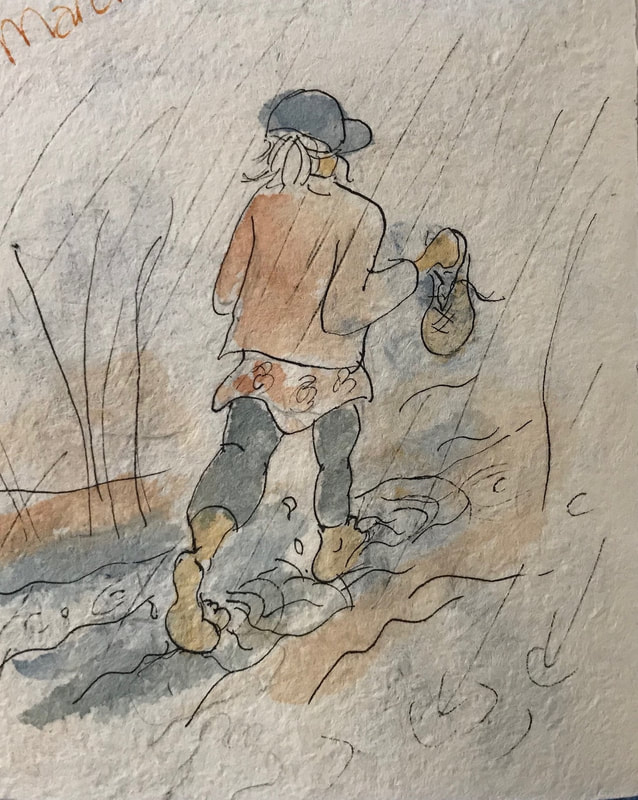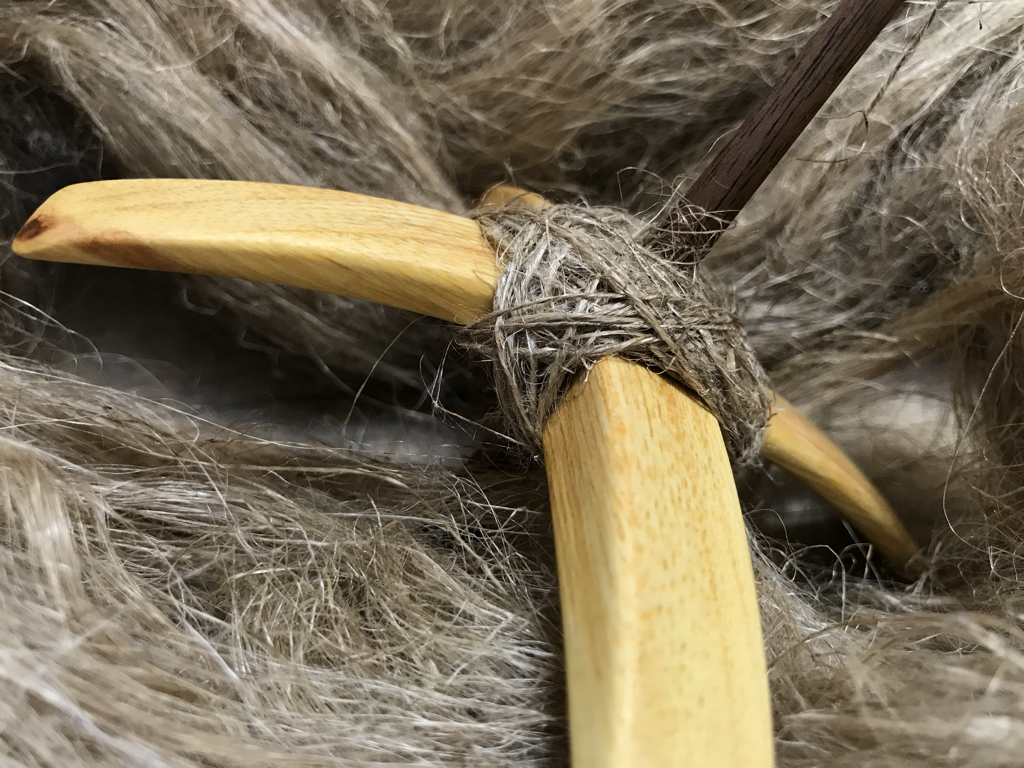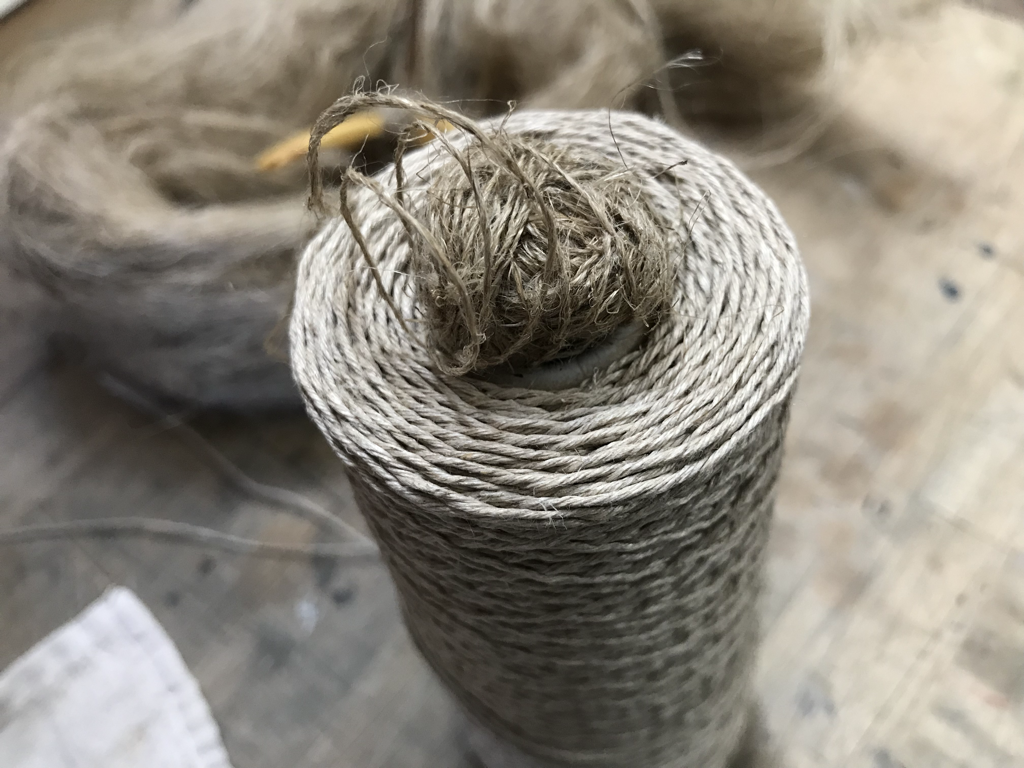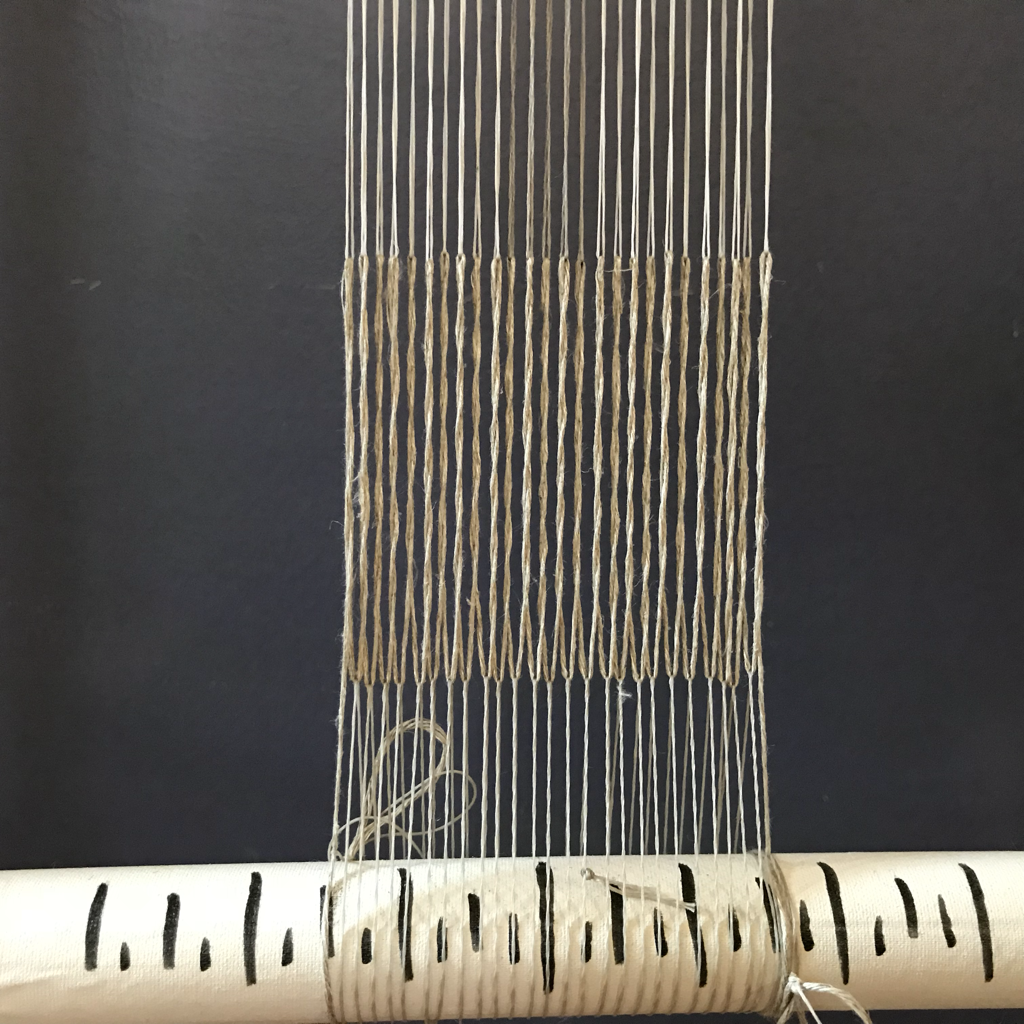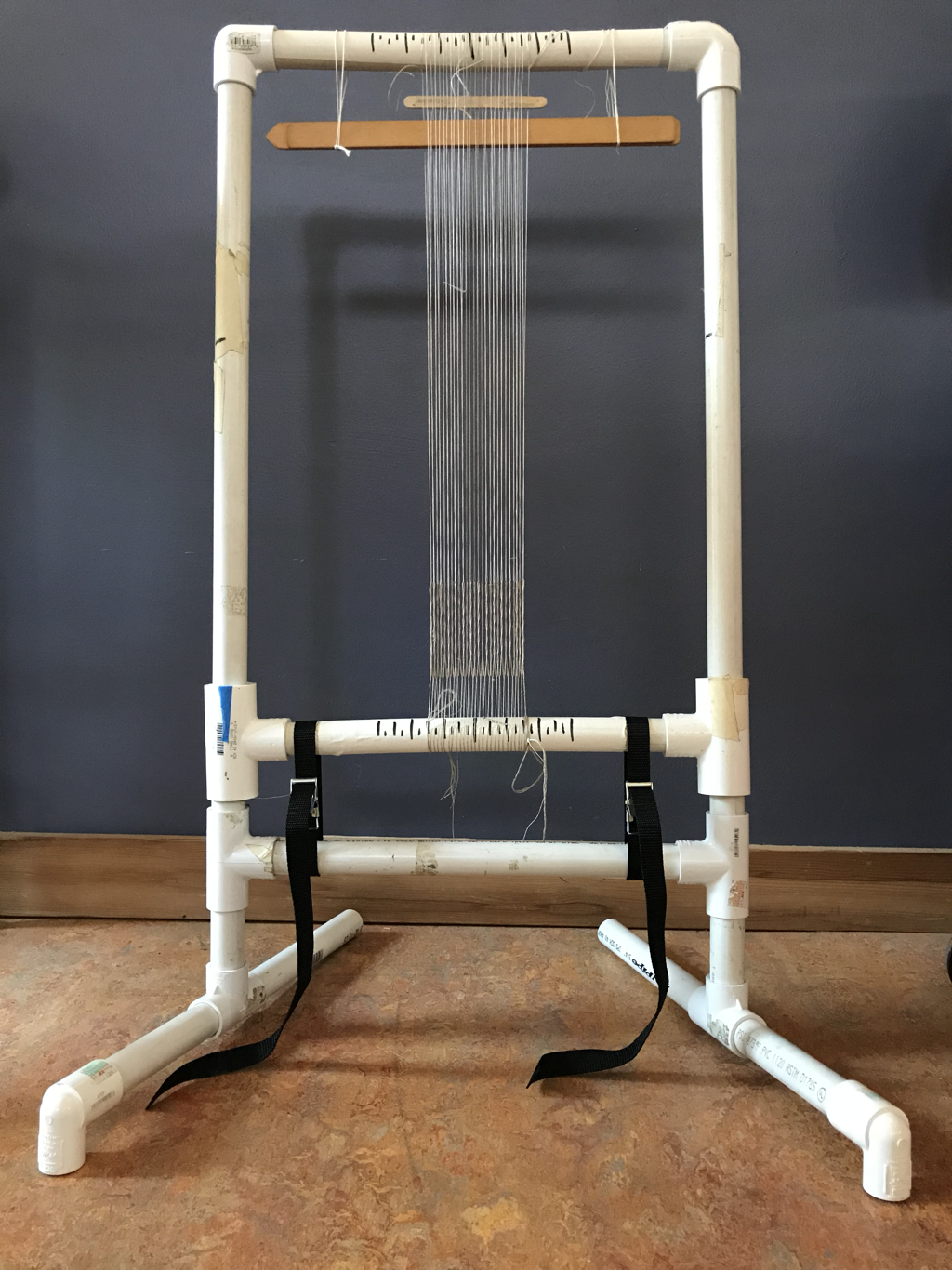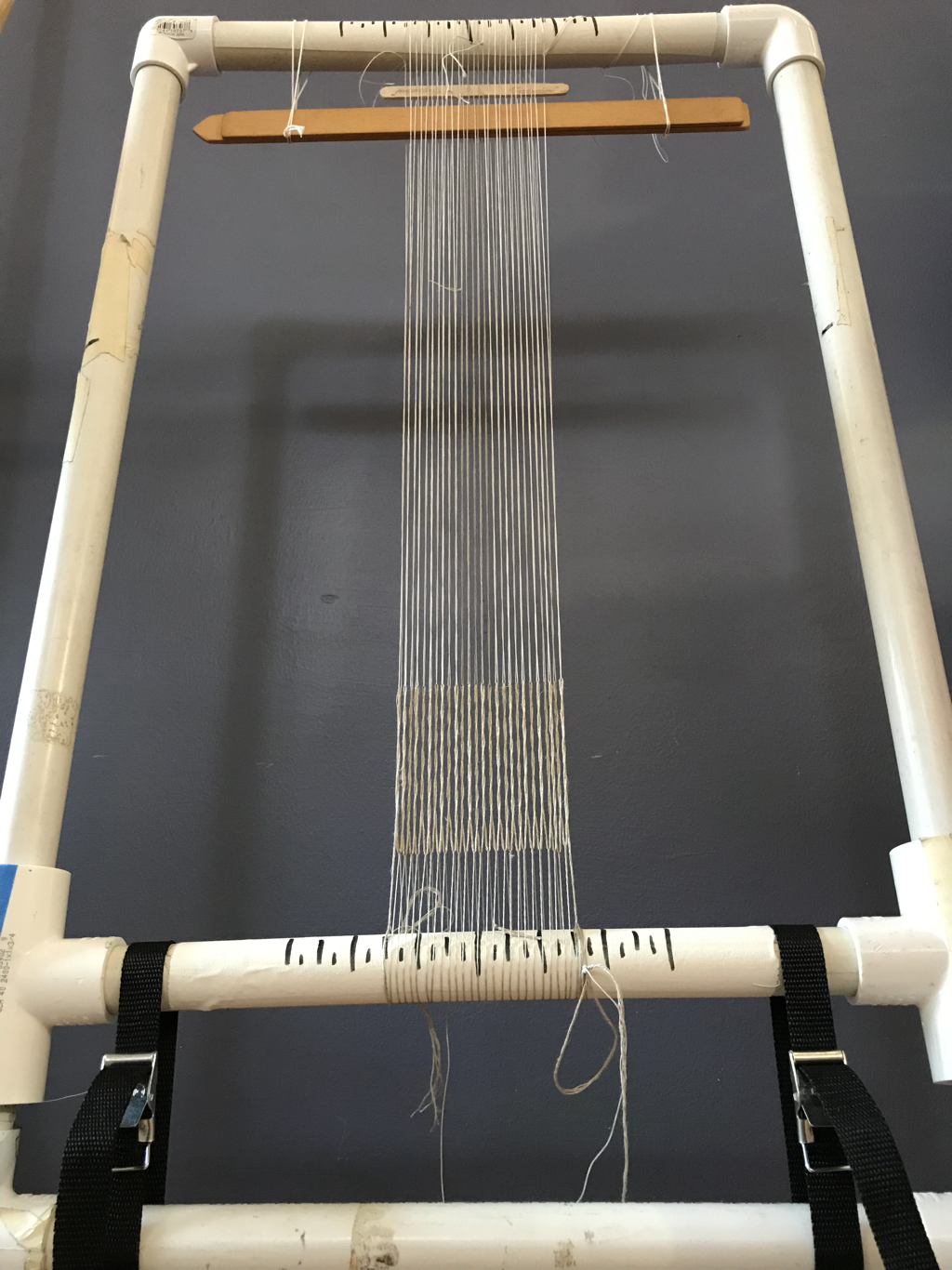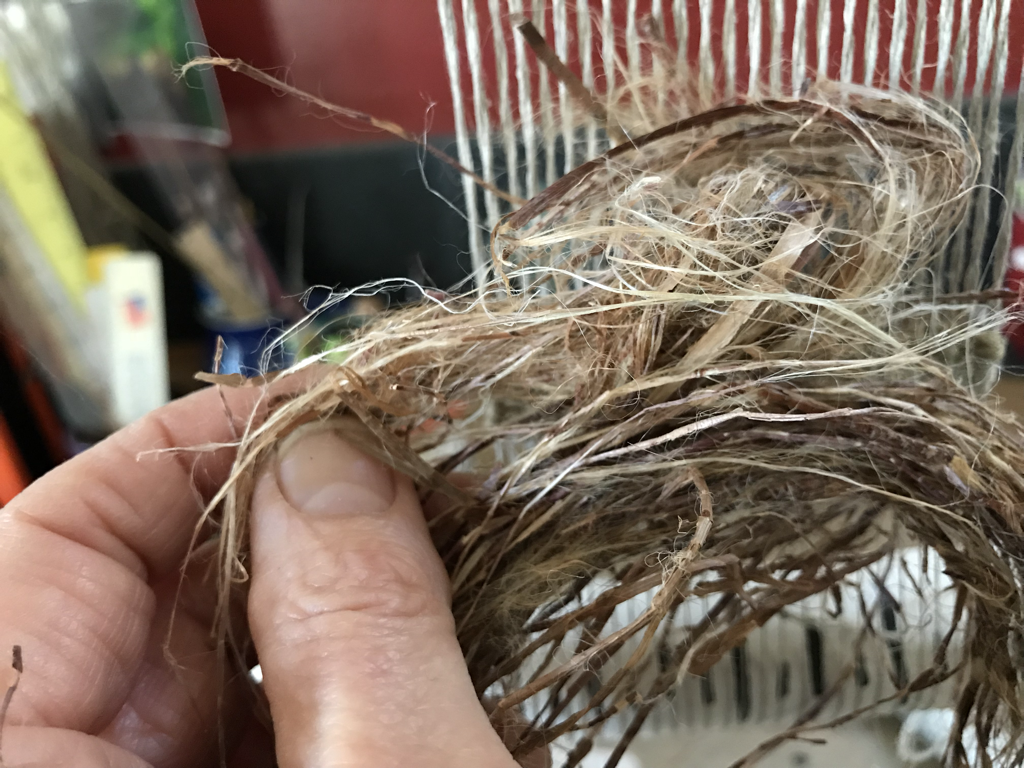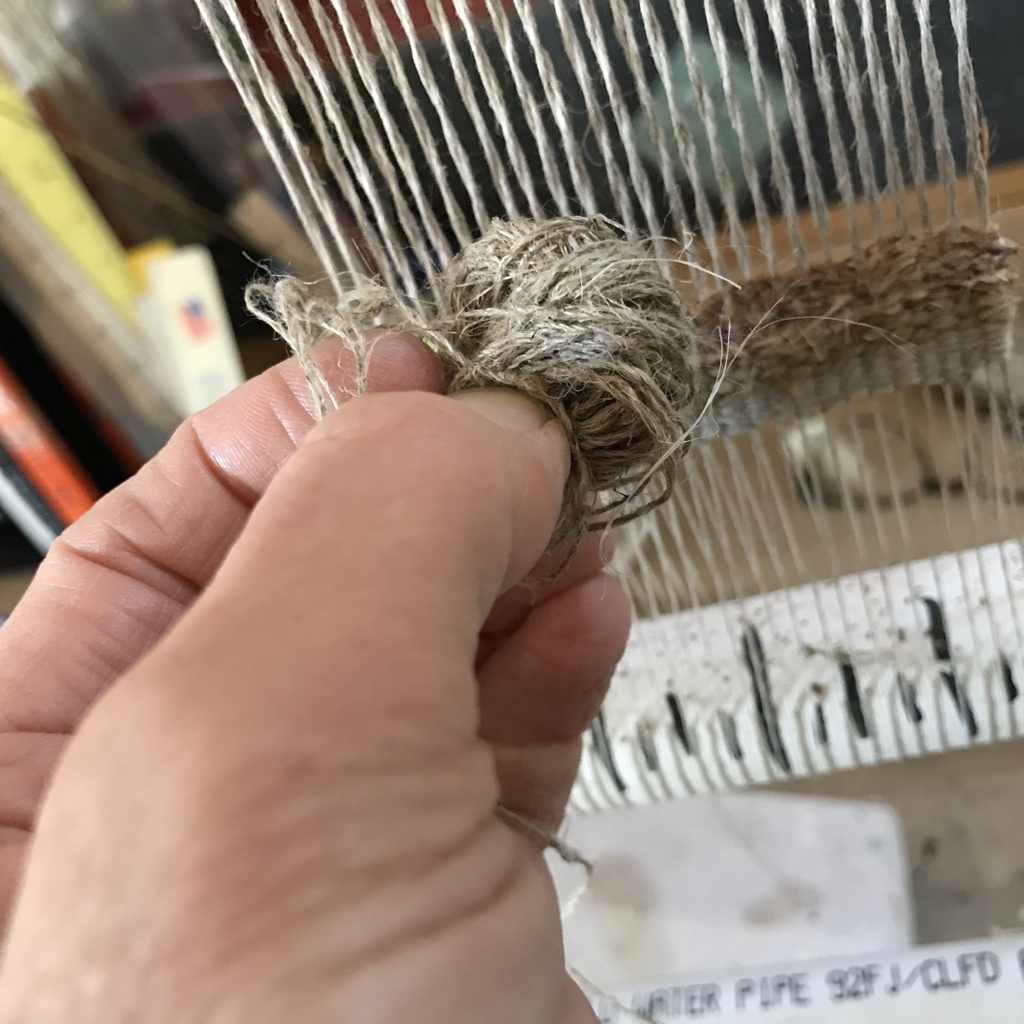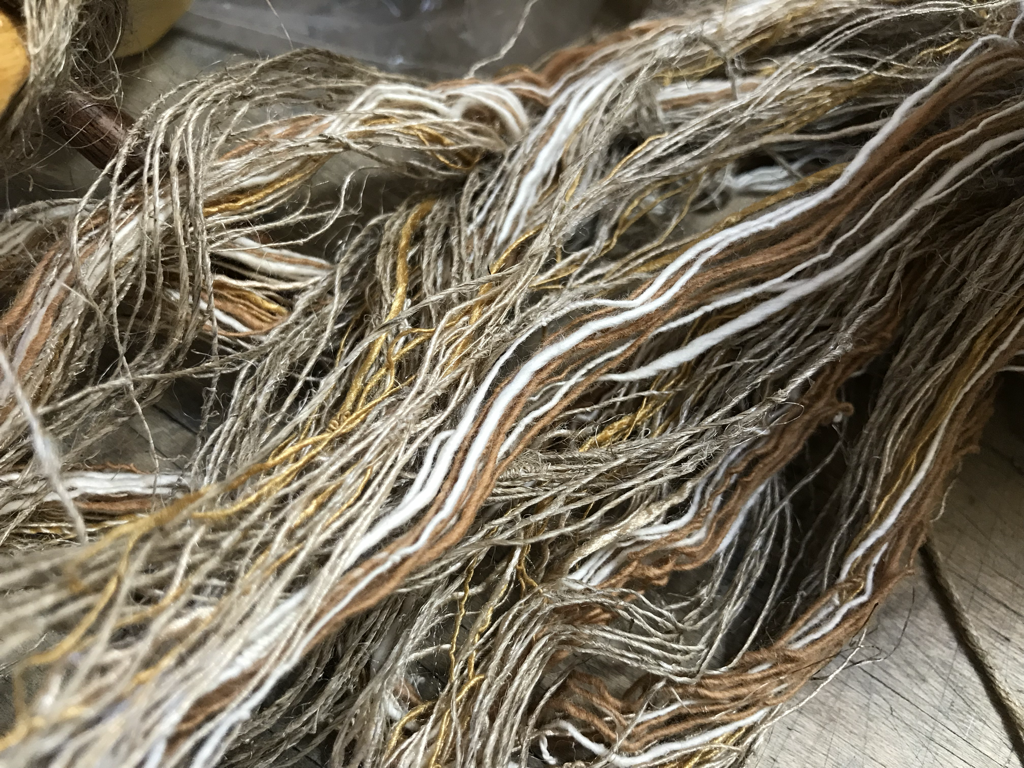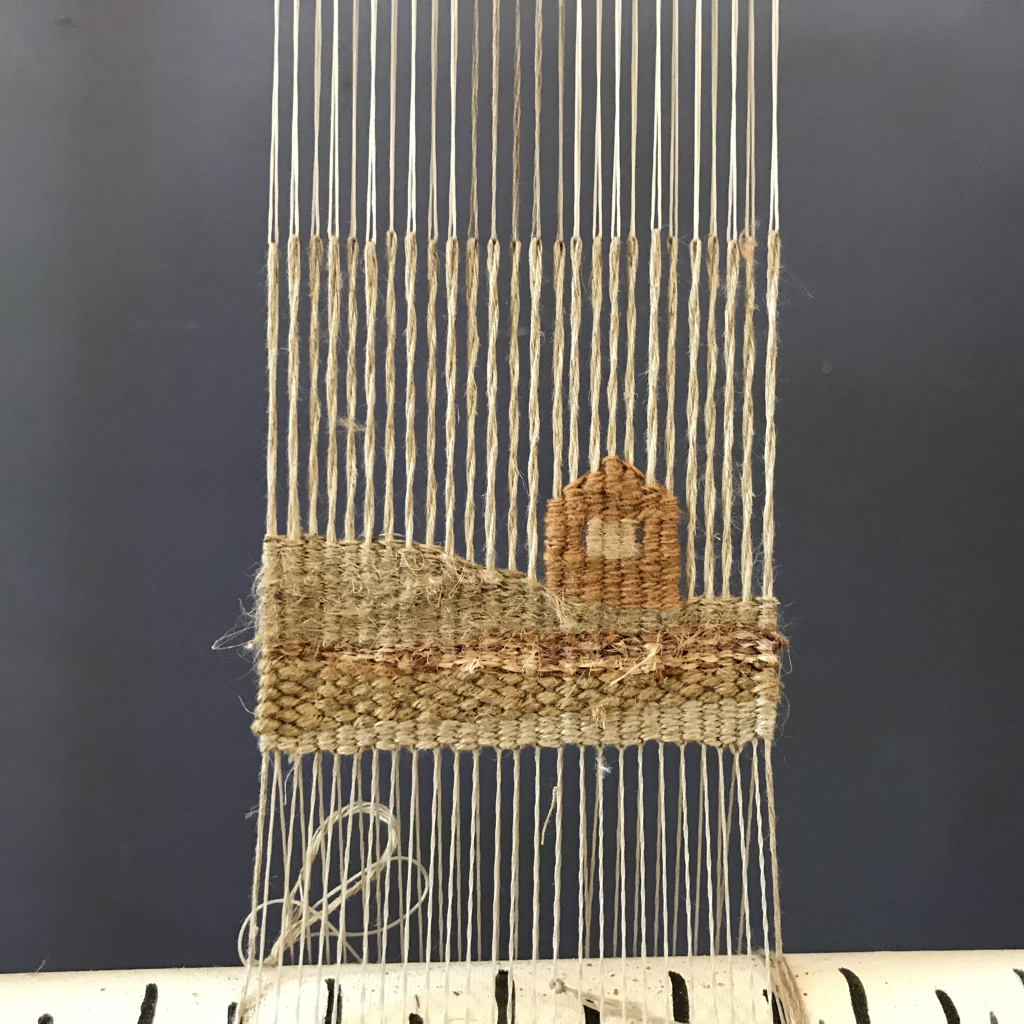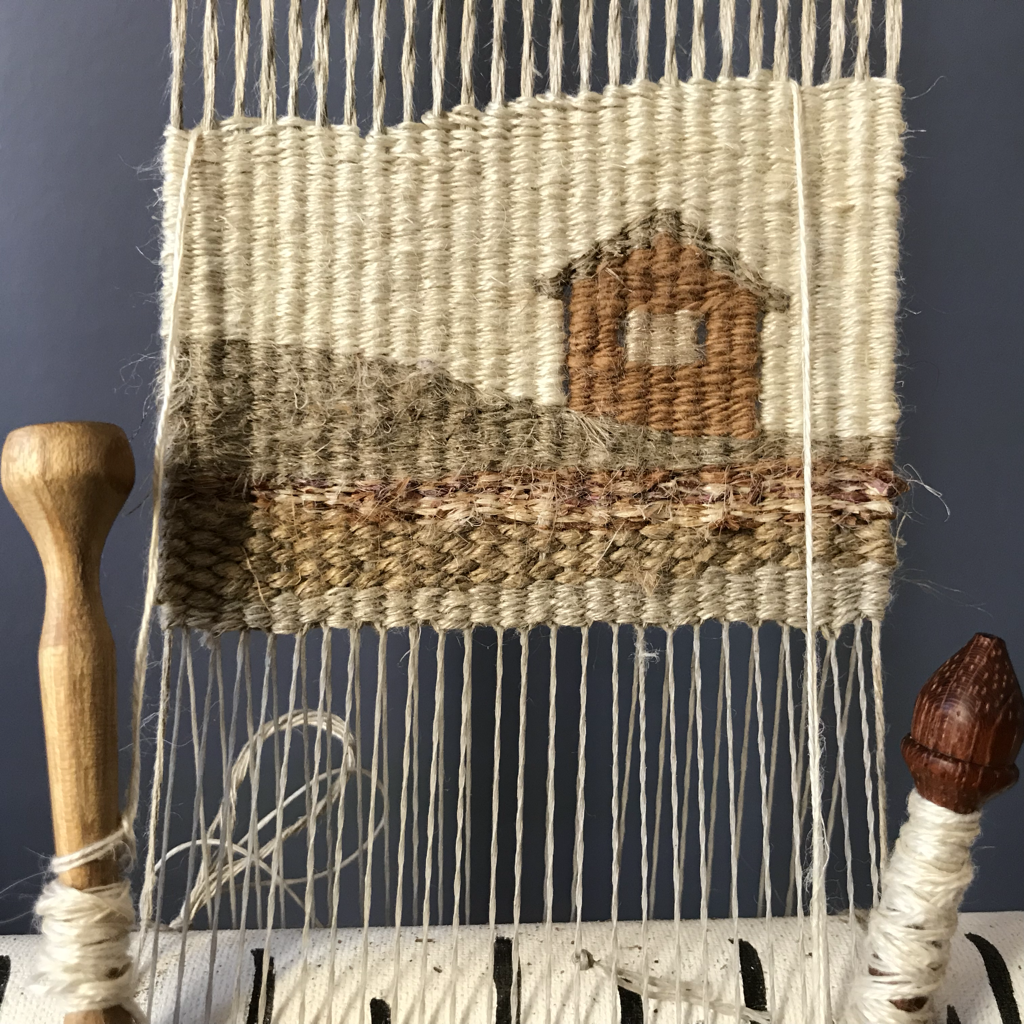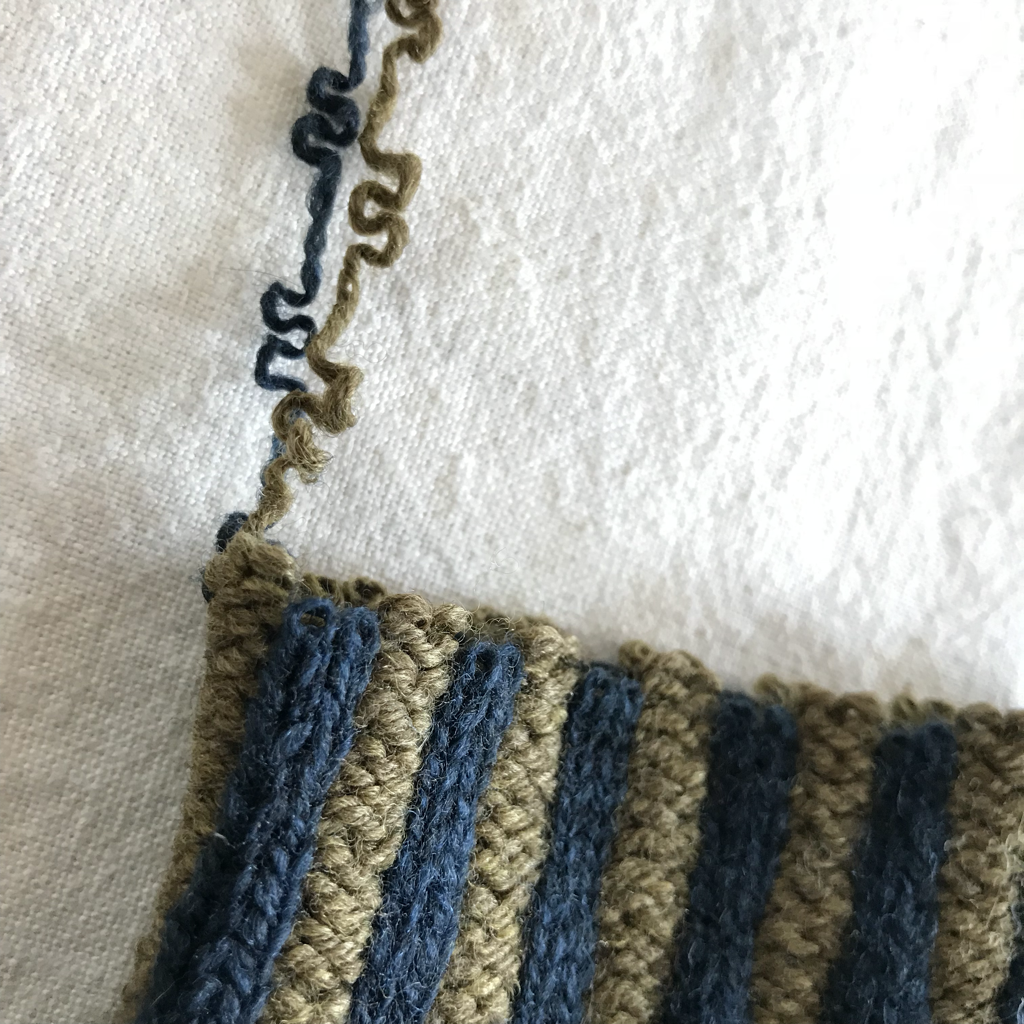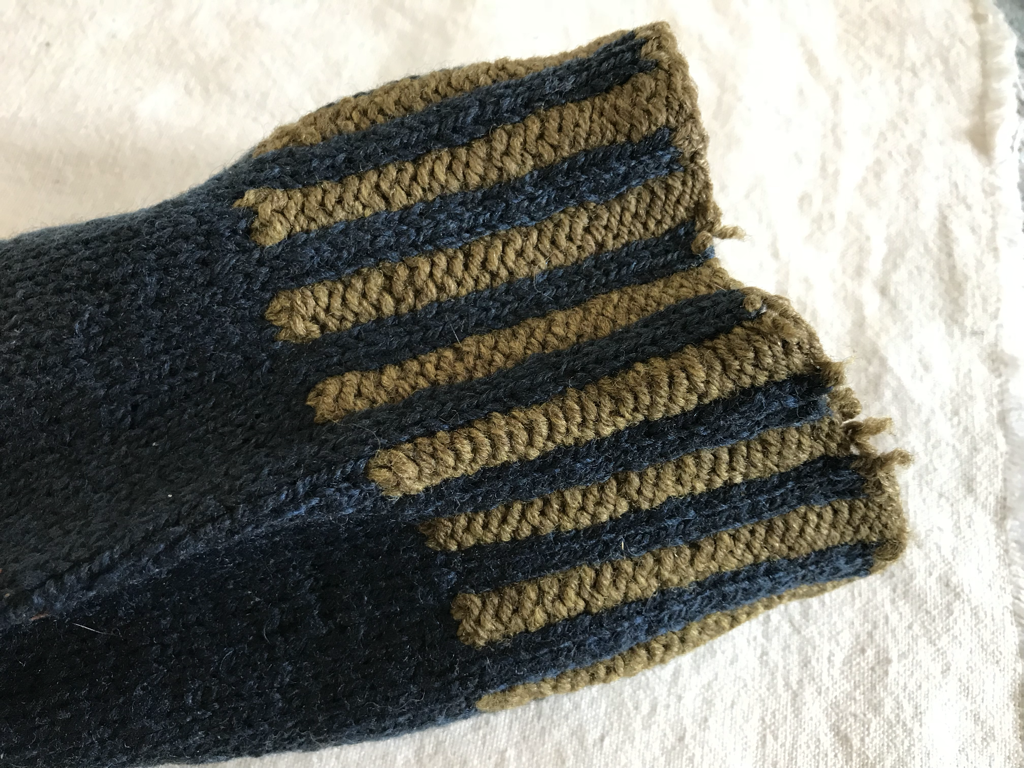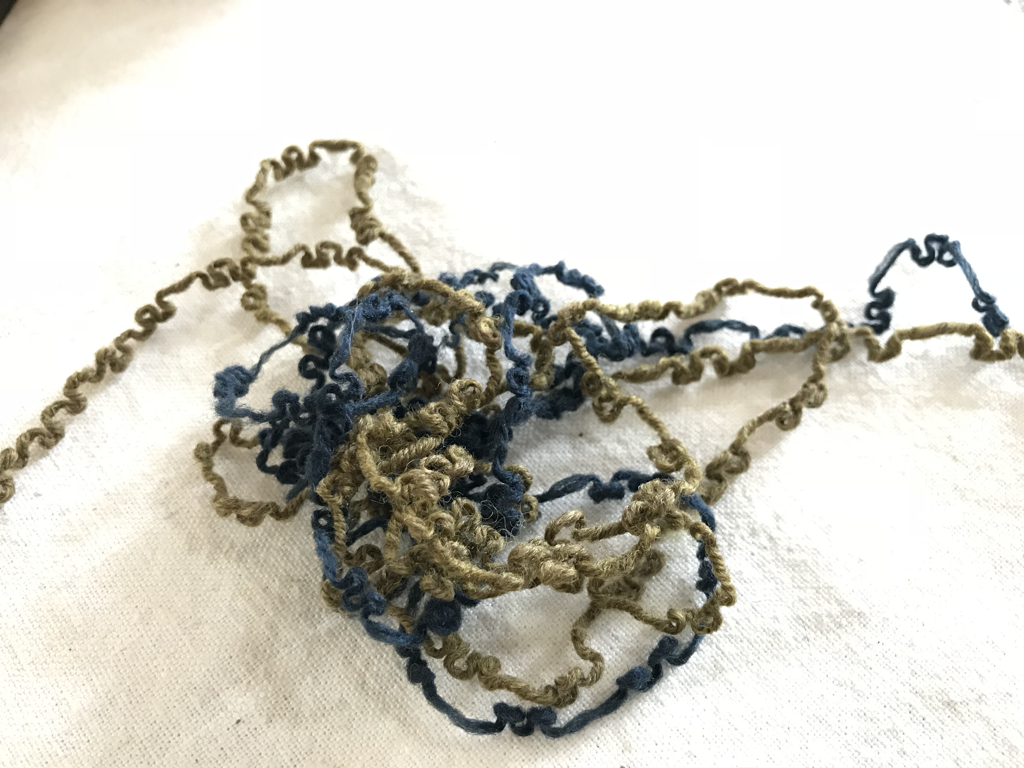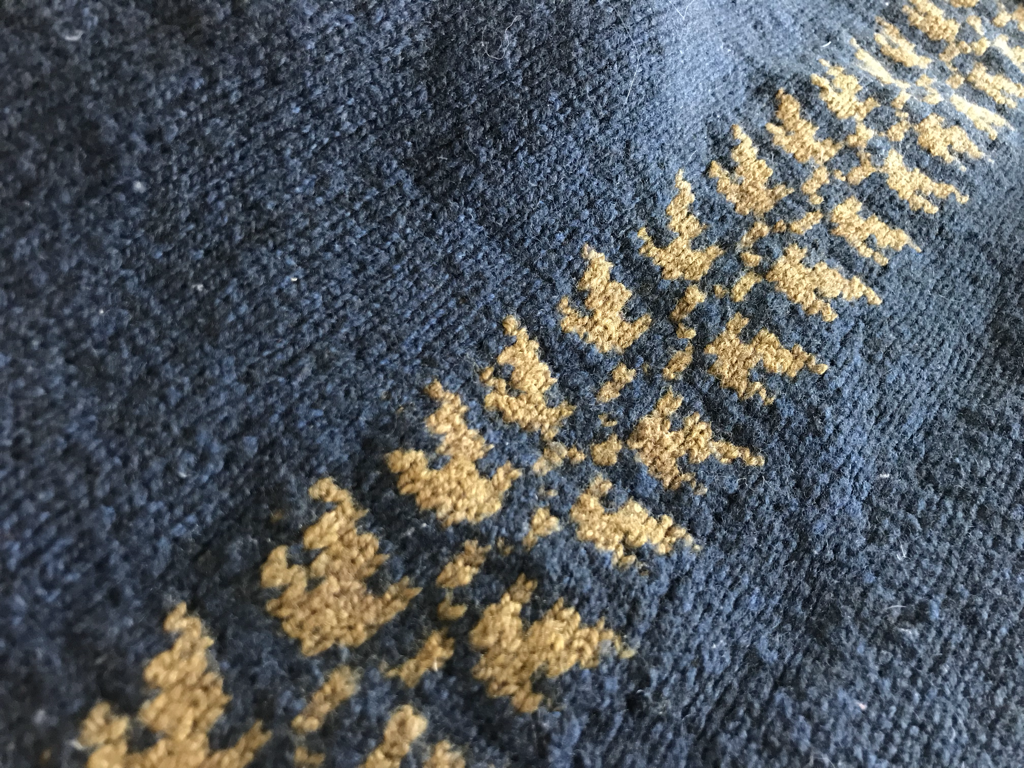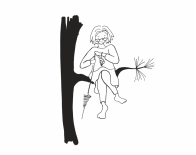despite years of serious misgivings
about mixing wool and linen
acid/base chemistry,
stretch, compression,
textile integrity),
to weave spindle wool and flax
into unwearable sweaters,
on a loom made of plastic?
(using Russian Paddle combs that have been gathering dust for years),
and make deliciously lumpy yarn from the disorganized tow,
from the now silky smooth hackled flax
and ply it for warp for the next tapestry?
note: plying stick HIGHLY recommended for keeping the fine line linen orderly
left much to be desired,
for after plying, washing and warping --
hairiness ensued.
(approx 1 teaspoon flour mixed with water till consistency of thin cream
applied with my fingers then allowed to dry).
(perhaps particularly with finger picking?)
but that it all worked fine anyway,
(though perhaps if I'd soaked the warp with size
rather than just lightly coating it,
it'd have stayed glued down?)
in part because of my carelessness
(as Susan Iverson says, "if you weave it right you don't have to block it ")
and in part because I wasn't taking into account
the huge differences in the size and properties of my wefts:
--ground: the lumpy tow I showed being spun up above (singles)
--house: leftover warp (two ply wet spun line)
--sky: two strands of cotton I've had floating around for years,
( Sally Fox organic roving spun on a supported spindle
and purchased punis spun on a book charkha--
the latter the source of the black flecks).
But also to notice how interesting it all is.
And how much I want to keep experimenting.
but because of differences in grist
between the hand spun warp,
the commercial linen warp in the two pictured at the top,
and all the different weft materials--
the surfaces vary as much as the selvedges.
(Note: Rebecca Mezoff is in the midst of writing
an amazingly clear and useful series of blog posts on the relationship between
sett, warp and weft size.
The photos of her samples make this deliciously clear!)
today,
at this point on my creative oxbow,
but hopefully there will be more.
